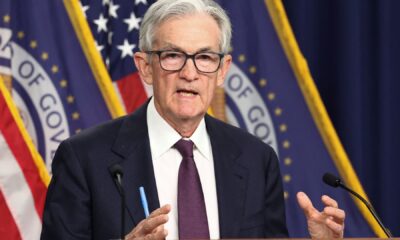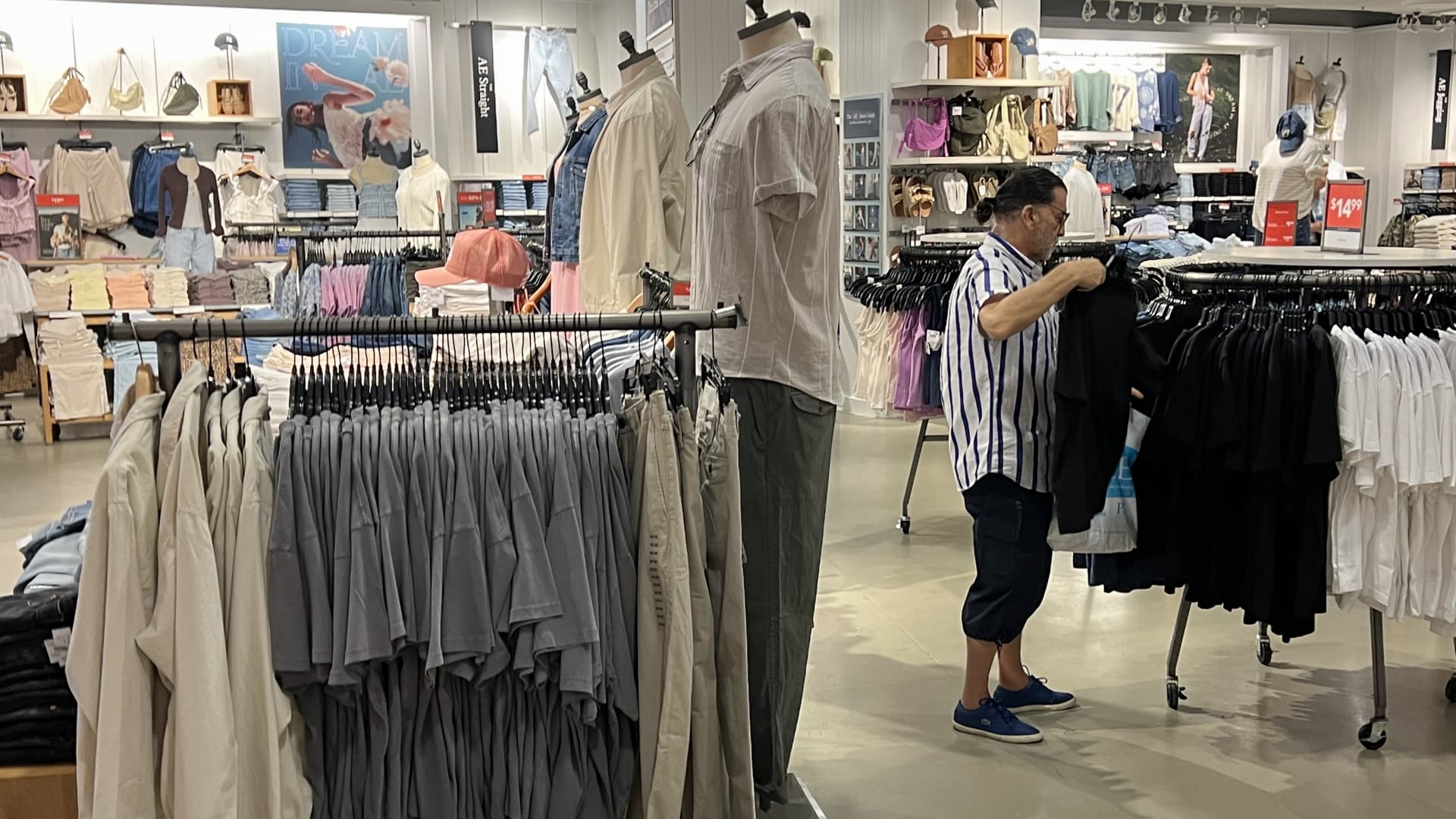South_agency | E+ | Getty Images
‘People don’t know a lot about tariffs’
Tariffs are taxes on goods imported from other countries, paid by the entity importing those goods. Businesses in turn often pass the cost of tariffs along to consumers in the form of higher prices.
In April, U.S. President Donald Trump enacted sweeping tariffs of varying rates affecting more than 180 countries and territories. Last week, the U.S. and China struck a deal to temporarily suspend most tariffs on each other’s goods. The U.S. also recently unveiled a trade agreement with the United Kingdom.
Despite the recent trade agreements and deals, consumers still face an overall average effective tariff rate of 17.8%, the highest since 1934, according to a recent report by the Yale Budget Lab.
James Lee, president of the Identity Theft Resource Center, said it’s not unusual for scammers to take a government action — whether that’s a new program or policy — and use it for the basis of a scam.
Scammers “will use the fact that people don’t know a lot about tariffs,” Lee said.
The PreCrime Labs team at BforeAI, a cybersecurity company, discovered about 300 domain registrations from cybercriminals related to tariffs in the first few months of the year. Some spread misinformation while others are financial scams aimed at businesses and consumers.
One site the company found was a newly registered phishing domain positioned to lead consumers to believe they are required to make payments to a legitimate governmental entity.
“Such payment requests are likely to be spread using email or messaging campaigns with a theme of urgent, pending payments, directing victims to the fraudulent site where their actions will result in financial losses,” researchers noted.
Some package payment requests are real
There are some cases where consumers might legitimately pay for products purchased from another country, namely, customs duties. Sometimes the U.S. Customs and Border Protection will charge consumers a processing fee in order to release an imported good.
“That’s not common, but it’s also not unusual,” said Lee. “It really does depend on what it is, where it’s coming from.”
Some consumers have also recently reported receiving legitimate payment requests from carrier companies after a purchase in order to receive their shipments, the Washington Post reports.
Some carriers are acting as the importer of record, meaning they are responsible for any duties, taxes and fees that are applied to the delivery, said Bernie Hart, vice president of customs of Flexport, a logistics firm.
If the carrier did not collect those additional fees for the product up front, the carrier will charge the end consumer those additional costs through a follow-up bill, he said.
This tactic might not last, because it creates a lot of inconvenience for both companies and shoppers, Hart said: “It’s not good for anybody in this process to give somebody a surprise bill.”
Tariff scam red flags
It’s easy for anyone to fall victim to a fraud scheme, said Ruth Susswein, director of consumer protection at Consumer Action.
If tariff policies continue to be in flux for longer, criminals will have more time to craft sophisticated attacks on consumers, said the ITRC’s Lee.
Your top priority is to avoid sharing personal information like Social Security numbers, bank details or account login credentials, especially under the guise of “tariff processing,” said Payton.
Here are three red flags to watch out for, according to scam experts:
1. Unsolicited and urgent messages
Emails, texts, or social media ads promising “tariff relief,” “vouchers,” “exemptions,” or urgent offers like “pay now to avoid tariffs” are likely scams, Payton said.
Not only are legitimate retailers unlikely to encourage tariff evasion tactics, but also the urgency is meant to pressure consumers into accepting, she said.
Also question unsolicited phone calls, emails or text messages about a package held up in the post office because of an unpaid fee, said Lee.
If you receive a request to pay import fees or duties on a purchase, look for the form 7501, which is an official government document detailing the import, said Hart.
2. Suspicious site links, emails
Scammers will create fake websites, emails and phone numbers to mimic retailers or government agencies, Payton said. If you receive a message, check for misspellings and URLs or email addresses that don’t match that of the supposed company or entity — say, a message from a “U.S. government official” that does not come from a dot-gov email.
You can use tools like WHOIS, a database that stores information about registered domain names and IP addresses, to authenticate the website and confirm registration details, she said.
3. Lack of transparency
Reputable merchants would clearly label tariff-related fees at checkout and provide contact information for inquiries, Payton said. Otherwise, the “lack of transparency is a red flag.”


 Accounting1 week ago
Accounting1 week ago
 Finance1 week ago
Finance1 week ago
 Economics7 days ago
Economics7 days ago
 Economics1 week ago
Economics1 week ago
 Finance1 week ago
Finance1 week ago
 Economics1 week ago
Economics1 week ago
 Personal Finance6 days ago
Personal Finance6 days ago
 Economics5 days ago
Economics5 days ago












